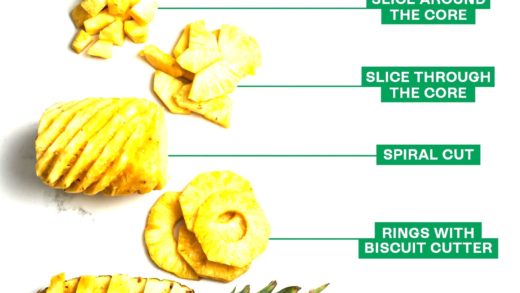This article covers cat liver disease, including symptoms like loss of appetite and jaundice, causes such as infections and obesity, and treatment options including medications and special diets. It discusses the long-term effects of liver disease, ways to support cats during treatment, and preventive measures to protect their liver health.
Common Symptoms of Liver Disease
Cat liver disease symptoms can manifest in various ways, affecting your pet’s behavior and health. Recognizing these symptoms early is crucial for effective treatment. Common signs include:
- Loss of appetite: A noticeable decrease in your cat’s interest in food.
- Weight loss: Unexplained drop in weight can signal health issues.
- Vomiting: Frequent vomiting, especially after eating.
- Jaundice: Yellowing of the skin and eyes, indicating liver dysfunction.
- Increased thirst and urination: Changes in drinking and bathroom habits.
Identifying potential liver disease through observable signs is essential. If you notice any of these symptoms, it’s advisable to consult your veterinarian for further evaluation.
Differentiating Symptoms
Understanding the unique symptoms of liver disease is vital for distinguishing it from other illnesses in cats. Liver disease can often mimic other conditions, making accurate diagnosis challenging. Key differentiators include:
- Behavioral changes: Increased lethargy or unusual aggression can be signs of liver issues.
- Specific gastrointestinal symptoms: Unlike other diseases, liver problems often lead to both vomiting and diarrhea.
- Physical changes: Look for signs of swelling in the abdomen, which is less common in other ailments.
Consulting a veterinarian will help confirm whether the symptoms are indeed related to liver disease.
Causes of Liver Disease
Understanding what might lead to liver issues in your cat is critical for prevention. Causes of liver disease in cats can vary widely, including:
- Infections: Viral or bacterial infections can severely impact liver function.
- Toxins: Exposure to harmful substances, such as certain plants or chemicals, can cause liver damage.
- Obesity: Overweight cats are at a higher risk of developing liver disease due to fatty liver syndrome.
- Genetic factors: Some breeds are more predisposed to liver conditions.
Knowing the root causes to help prevent liver disease is essential for any cat owner. Regular check-ups and maintaining a healthy diet can significantly reduce the risk of liver problems.
Diagnosing Liver Disease
Diagnosing liver disease in cats involves a series of steps that veterinarians take to confirm liver problems. The process typically begins with a thorough physical examination and a detailed history of your cat’s symptoms. Key diagnostic tools include:
- Blood tests: Blood work can reveal elevated liver enzymes, indicating potential liver dysfunction.
- Ultrasound: This imaging technique allows vets to visualize the liver structure and detect abnormalities.
- X-rays: Though not as detailed as ultrasounds, X-rays can help identify signs of liver enlargement or other issues.
- Liver biopsy: In some cases, a tissue sample may be necessary to confirm the diagnosis.
Understanding the diagnostic process for liver disease helps cat owners know what to expect during a vet visit. Quick and accurate diagnosis is essential for effective treatment.
Treatment Options
Treatment options for cats with liver disease vary depending on the underlying cause and severity of the condition. Here are some common therapies and medications:
- Medications: Vets may prescribe drugs to reduce inflammation, control symptoms, or manage infections.
- Fluid therapy: Administering fluids can help hydrate your cat and support liver function.
- Special diets: Tailored diets can provide the necessary nutrients while minimizing liver strain.
- Supplements: Antioxidants and other supplements may support liver health.
Learning about the best approaches to treat liver disease is crucial for recovery. Regular follow-ups with the veterinarian are also important to monitor progress and make adjustments as needed.
Dietary Considerations
Diet plays a significant role in managing liver disease in cats. Food choices that can support liver health in cats include:
- High-quality protein: Easily digestible proteins are vital to support recovery.
- Low-fat content: Reducing fat intake can help prevent further liver stress.
- Increased antioxidants: Foods rich in antioxidants can help combat oxidative stress on the liver.
- Hydration: Ensuring your cat stays hydrated is crucial for liver function.
Understanding how diet affects liver disease management can help cat owners make informed decisions. Always consult with your veterinarian before making dietary changes.
Long-term Effects of Liver Disease
Cat liver disease can have serious long-term effects on your pet’s health. Understanding these potential complications is crucial for managing your cat’s condition. Common long-term outcomes include:
- Chronic liver failure: This condition can develop if liver disease is not effectively managed, leading to severe health issues.
- Increased susceptibility to infections: A compromised liver weakens the immune system, making your cat more vulnerable.
- Development of additional health issues: Cats with liver disease may experience complications such as diabetes or gastrointestinal problems.
- Ongoing dietary restrictions: Many cats will need to maintain special diets to support liver health.
Understanding these outcomes allows cat owners to provide better care and make informed decisions regarding their pet’s health.
Supporting Your Cat Through Treatment
Supporting your cat during liver disease treatment is essential for their recovery. Here are effective strategies:
- Regular vet visits: Keep up with appointments to monitor your cat’s progress and adjust treatments as needed.
- Medication management: Ensure that your cat receives all prescribed medications on time.
- Comfortable environment: Create a stress-free space for your cat to rest and recover, away from loud noises and other pets.
- Encouraging hydration: Make sure your cat has constant access to fresh water, as hydration is crucial for liver function.
Implementing these support strategies can significantly enhance your cat’s quality of life during recovery.
Preventive Measures for Liver Health
Reducing the risk of liver disease in cats involves proactive steps that every cat owner should take. Effective preventive measures include:
- Regular veterinary check-ups: Annual exams can help catch potential issues early before they escalate.
- Healthy diet: Feed your cat a balanced diet rich in nutrients while avoiding high-fat foods that can stress the liver.
- Weight management: Keep your cat at a healthy weight to reduce the risk of fatty liver disease.
- Avoid toxins: Ensure your home is free from harmful substances that can damage the liver.
Learning these proactive measures can help safeguard your cat’s liver health and ensure a longer, happier life.





Comments are closed.